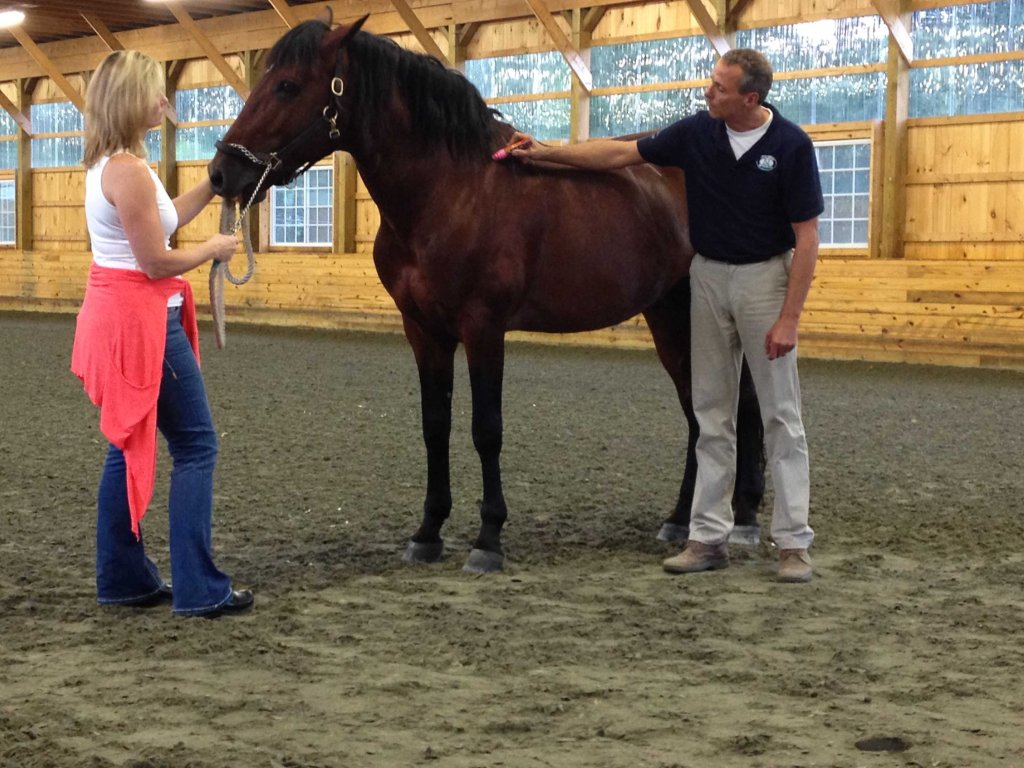
Humans and horses have been joined for thousands of years, and for much of that time, one thing has served as the primary point of physical contact between them: the saddle.
However, for many horses and many riders, the saddle has been no less than a refined means of torture. Horses have long suffered from tree points impeding the movement of their shoulder blades; too narrow gullet channels damaging the muscles and nerves along the vertebrae; and too long panels putting harmful pressure on the reflex point in the loin area.
Male riders saddle up despite riding-related pain and the potential for serious side effects, such as impotence, while female riders endure backache, slipped discs, and bladder infections, to name just a few common issues.
Master Saddler and Saddle Ergonomist Jochen Schleese explains this conundrum—that both horses and riders are often caused pain by the very thing that is meant to join them together—in his new book SUFFERING IN SILENCE.

“As a saddle fitter, I need to determine exactly where the saddle needs to sit on the horse’s back without impeding the rider or possibly damaging the horse,” says Schleese. “To begin with the horse, there are several criteria that are generic to any horse and any saddle fitting, and one of these is simply the process of an evaluation. It sounds simple but if you don’t follow the logical steps in their correct order, then the possibility of missing something critically important increases.
“For this reason,” he continues. “Begin the saddle-fit evaluation the same way you would begin an evaluation of the horse: Start on the left and observe the horse, first without and then with the saddle in place (no pad), from front to back, and then top to bottom. Repeat this observation exercise on the other side. It is crucial to first observe the horse without a saddle from both sides. This will allow you to determine how defined the horse’s musculature is, the shape of the withers, his general condition, and whether there are variations in muscle development that could give some insight into either training methods or saddle fit. This so-called ‘static’ evaluation also includes the saddle’s balance, length, freedom at the withers, tree width, and tree angle.”
While there are many important aspects of saddle fit for horse and rider, here are four main points to consider when checking your own saddle’s fit. Note that these are best observed first with the horse standing still in a well-lit area on even footing.
4 RULES FOR SADDLE FIT
1. The saddle should not be on the shoulder cartilage and should have enough room at the top and at the side of the withers muscles (2 to 3 fingers all around, not just at the top).
2. The saddle should not be lying anywhere on the spinal processes nor on the dorsal ligament system (this means the gullet channel needs to be 3 to 4 fingers wide for the entire length of the saddle.
3. The saddle should not go any farther than the 18th lumbar vertebra (where the last floating rib is) and should not lie on the loins.
4. The saddle panels should not be too wide. You can feel where the edges of the longissimus muscle transitions into the internal intercostals (ribs), which is where the panel should end so as not to impede the horse’s ability to expand his rib cage properly during breathing and movement.
When you have checked these points statically, have a friend watch you as you mount and go through all the gaits—checking to see if what you have determined while the horse was standing still works during motion and is reflected in the horse’s behavior and in your own position. In this dynamic evaluation, you should walk, trot, and canter in both directions. Specifically, your friend should watch to see if the saddle moves during each of these gaits. He or she should watch the horse’s eyes, ears, tail, and his ability to move freely and, especially, how the muscles move and twitch in front of and behind the saddle.
Check out this terrific short video of Schleese explaining some of the other important points of saddle fit:

You can learn more about the impact of saddle fit on the health, happiness, and performance of both horse and rider in SUFFERING IN SILENCE by Jochen Schleese, available now from the TSB online bookstore where shipping in the US is FREE.
DON’T MISS OUR GREAT HOLIDAY DISCOUNTS!
